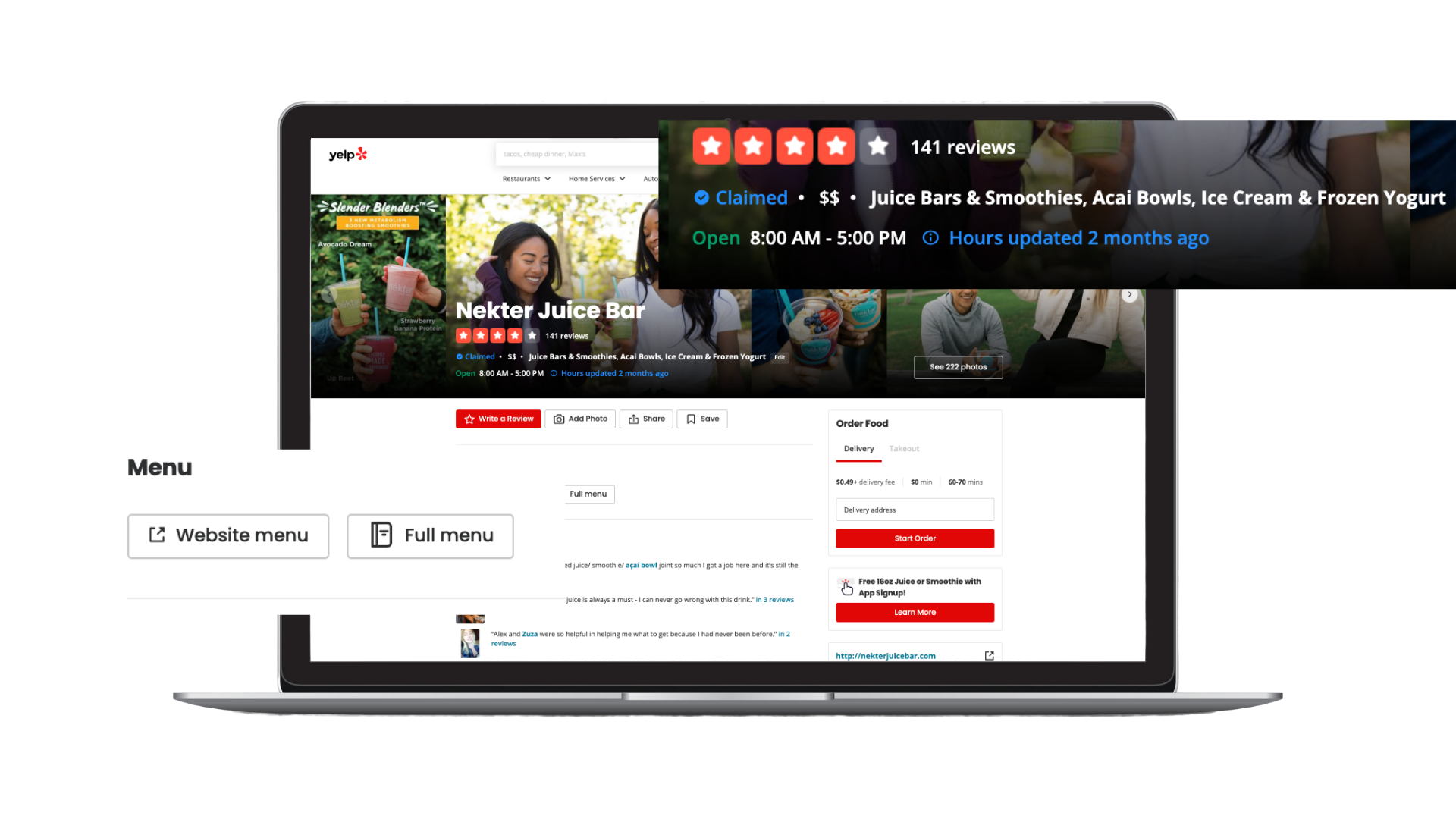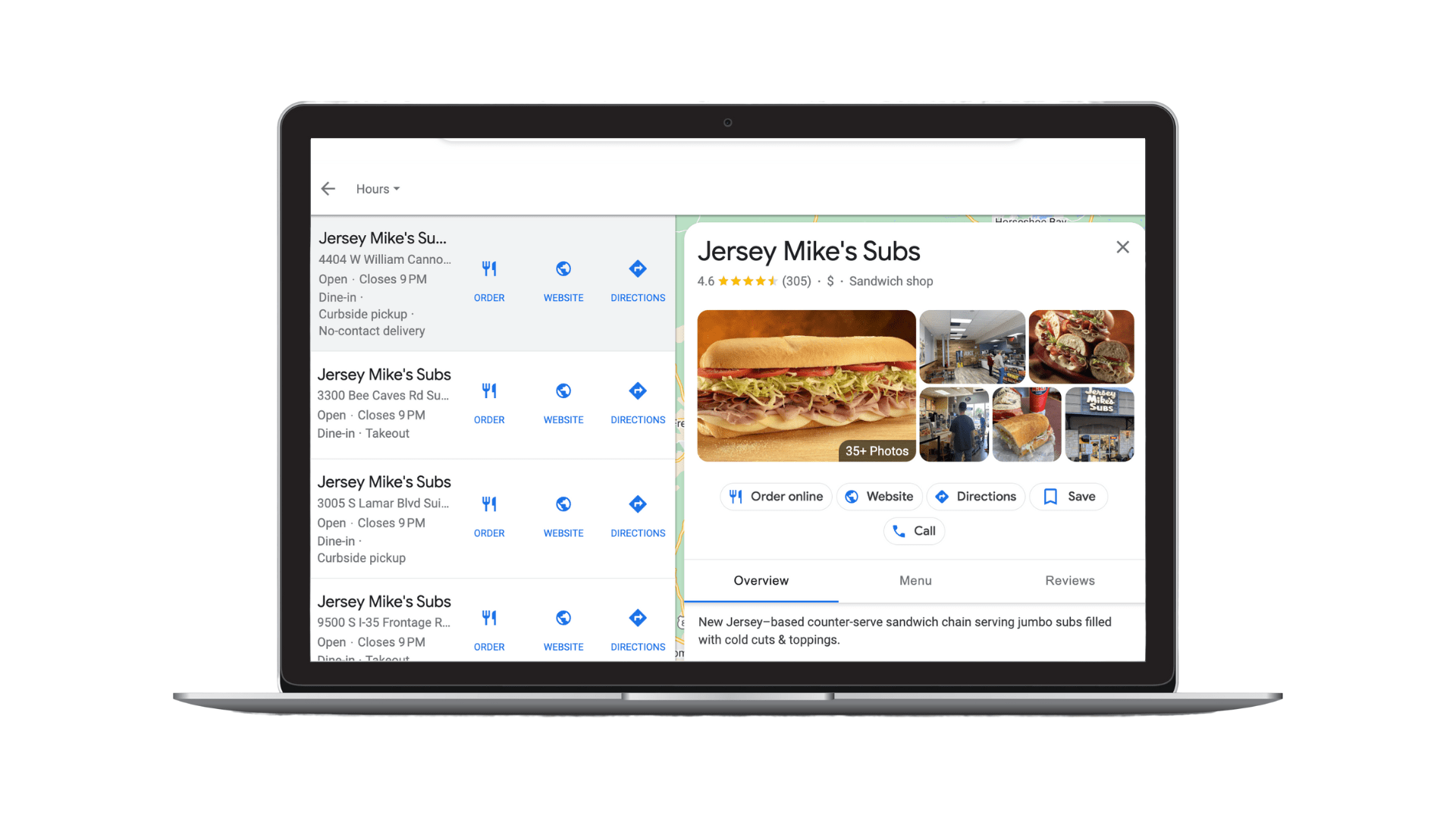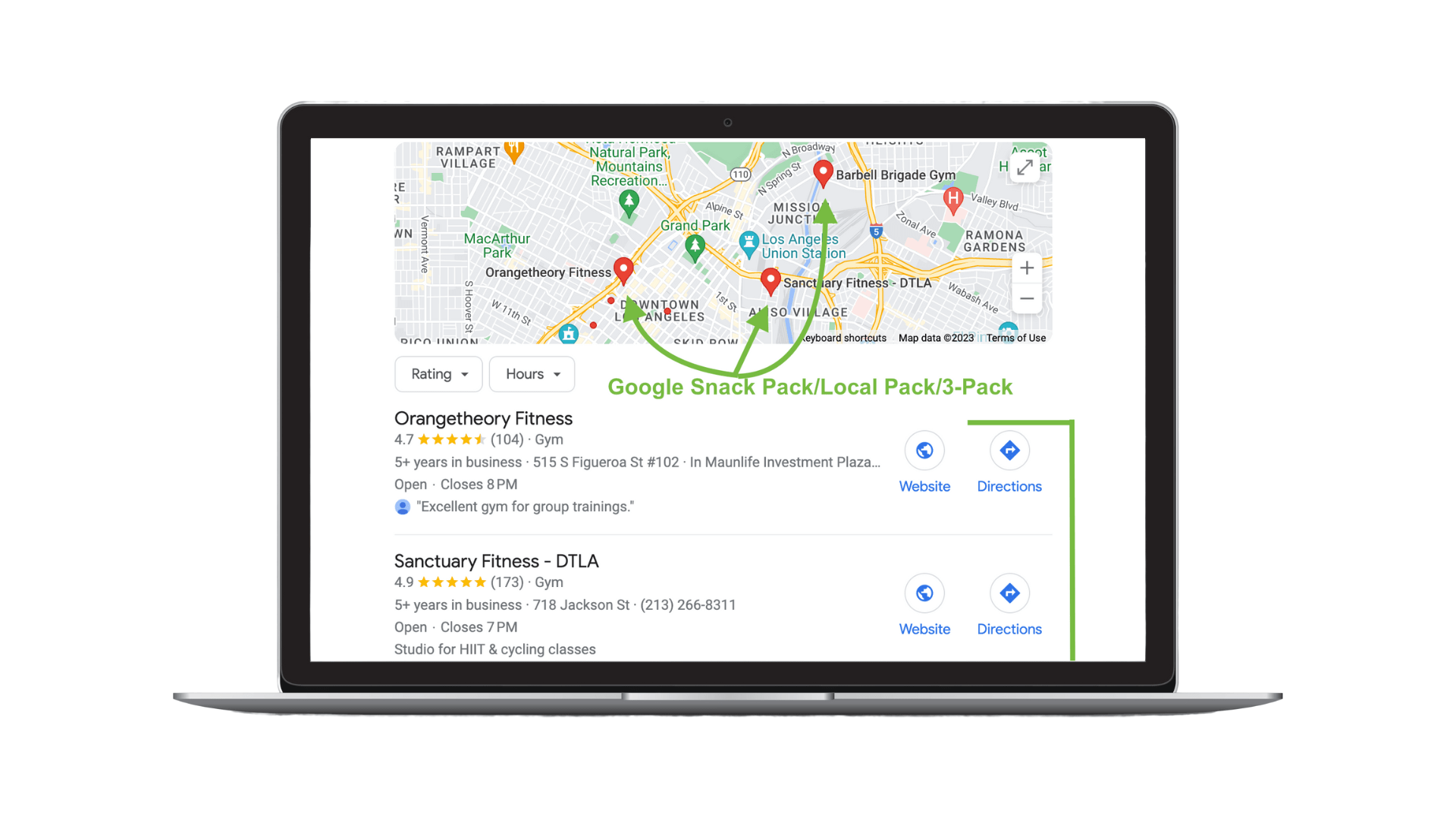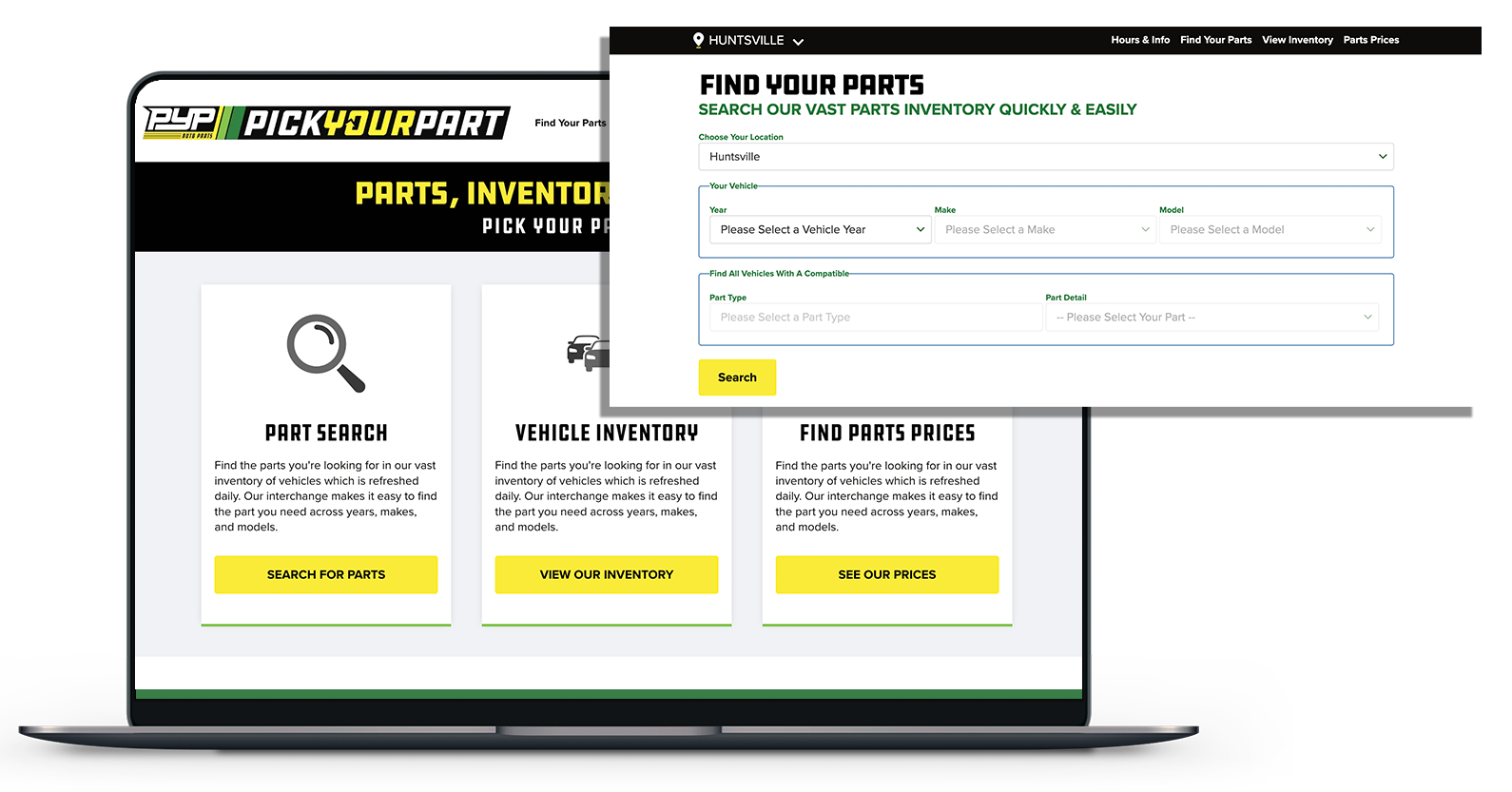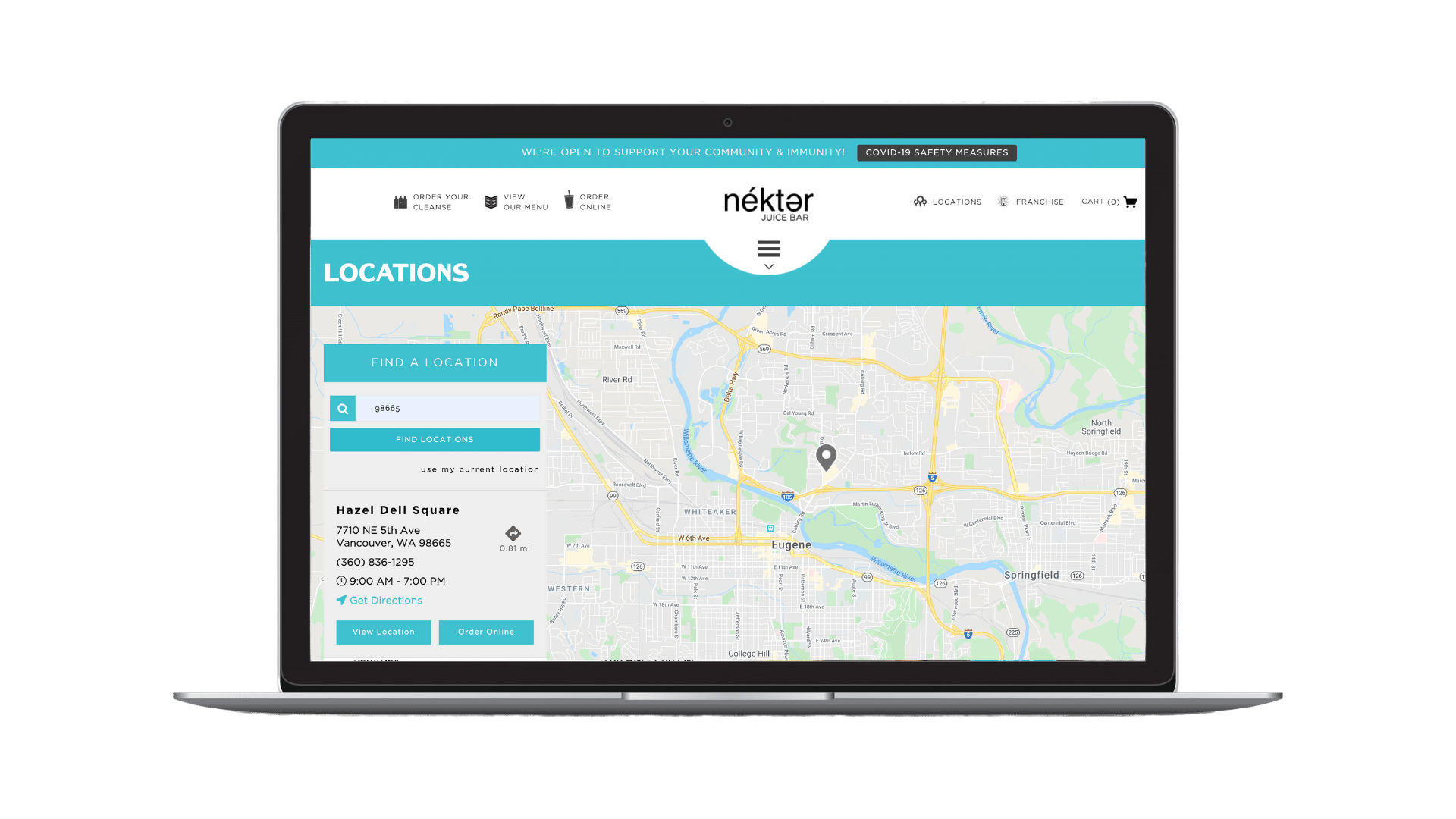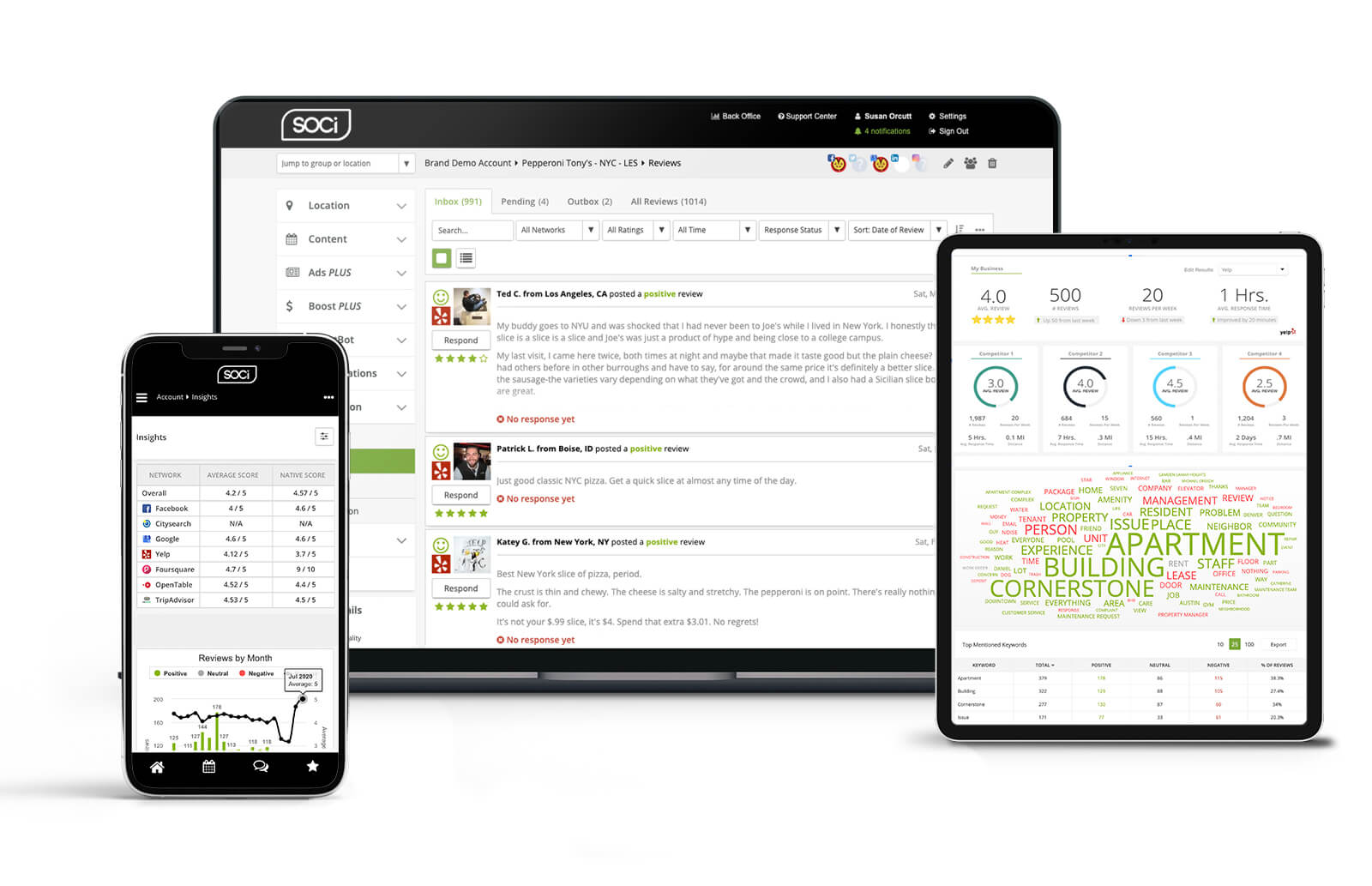10 Must-Have Local Online Marketing Tactics
Table of Contents
Today, consumers are searching locally for products and services. Forty-six percent of all Google searches are linked to something local. Therefore, you need a local online marketing strategy to meet consumers where they’re searching and shopping.
A local online marketing strategy allows you to establish a strong presence in the local marketplace and generate deep connections with local target audiences.
In this blog post, we’ll share ten local marketing tactics to help you improve online visibility, gain more local customers, and increase your revenue.
Still not convinced? SOCi serves over 800 multi-location brands, and we’ve used these tactics to boost our clients’ sales. Let’s dive in!
What is Local Online Marketing?
Local online marketing is a digital marketing strategy to target consumers within a designated geographic area near local businesses.
Local online marketing, sometimes called local digital marketing or localized marketing, includes local SEO (search engine optimization), local social media efforts, and more.
These tactics, if utilized correctly, will improve your local stores:
- Local SEO
- Ad targeting
- Engagement and conversions
- Online reputation
- Brand awareness
- Customer loyalty
The 10 Best Local Online Marketing Strategies
Now that you understand the value of local online marketing, let’s dive into specific localized marketing tactics with a high ROI.
1. Understand Local Listings
Local SEO or local search optimization is a significant aspect of local online marketing. We mentioned earlier that nearly half of all searches are related to something local. Therefore, you must optimize your website and local businesses’ local listings to appear in these local search results.
If you’re unfamiliar, local listings are online profiles of your local stores. They include essential business information consumers seek and are on local directories or search engines like Google, Apple Maps, and Yelp.
We’ll dive into how to manage your local listings effectively in the next few steps.
2. Claiming Local Listings
To appear in local search results, you must first claim all your local listings across all major directories. That way, you can manage your local listings and ensure each listing has accurate business information.
If a single business location has discrepancies or contradicting information, you will confuse consumers and search engines. For example, if a Yelp Page has a different address than your Google Business Profile (GBP).
These inaccuracies often lead to poor user experience (UX) and decreased search rankings. Read our article on how to claim your GBPs for more information.
3. De-Dupe Local Listings
When claiming your local listings, you also want to ensure duplicate listings don’t exist. Sometimes, search engines or directories inadvertently create duplicate listings, confusing consumers.
Read our article on how to claim or merge duplicate GBP listings.
4. Optimize Your Google Business Profiles
We’ve defined local listings and explained the need to claim them and remove duplicates.
Now, you’ll learn one of the most essential local online marketing techniques: optimizing your local listings so they can rank higher on search engine results pages (SERPs).
The most crucial local listing is your Google Business Profiles (GBP). Google owns 92% of the search engine market share worldwide, making it essential to appear on Google Search and Maps for locally relevant queries. Below is an example of Jersey Mike’s Subs’ local listings on Google.
Here’s a list of details to add to your GBPs. Some of this information should also go on other listings, but what you can include depends on each local directory’s rules.
- Name, address, phone number (NAP)
- Operating hours, especially during major events or holidays
- Products and services your local store offers
- Links to your website and social media profiles
- High-quality images and videos
GBP-specific information:
- Business categories
- Attributes
- Examples: virtual appointments, pickup, women-owned, wheelchair accessible seating
- Google Q&A
- Google Posts
The Local Impact of Optimizing Your GBPs
Including this business information on your GBPs and updating it when changes occur will increase the likelihood of your Profiles ranking in the coveted local pack — sometimes called the Google 3-Pack.
Our research found GBPs in the local pack receive 126% more traffic and 93% more actions (calls, website clicks, and driving directions) than those ranked 4-10.
For more detailed information on optimizing your GBPs and other local SEO strategies, download our The Top 10 Things You Should Be Doing in Local SEO Now guide.
5. Manage and Respond to Online Reviews
Your GBP and other listings’ ratings and reviews also impact local search rankings.
According to local SEO experts, “high numerical Google ratings (e.g., 4-5 stars)” is the sixth most important local pack/finder ranking factor, and “quantity of native Google reviews (w/ text)” is the eighth highest factor.
Additionally, we found that GBPs ranked first or second in the local finder average 390 reviews, while those ranked three through five averaged 28% less with 281 reviews.
Responding to reviews is one way to gain more positive ratings and reviews. Your responses show current and future customers that you value them and are continuously looking to improve your local stores.
Download The Multi-Location Marketer’s Guide to Online Reputation Management for more details on how to gain and manage online reviews.
6. Create Local Pages
Another local online marketing tactic influencing local SEO is producing and optimizing local pages.
Local pages, or local landing pages, are online profiles of your local stores. They’re similar to local listings — and should contain much of the same information — but they live on your website. This allows you to have complete control over your local pages.
Beyond improving search rankings, local pages also serve as sales pages. Consumers can find information about your local stores and purchase goods or services easily.
Here are a few ways to optimize your local pages:
Business information:
Include the essential business information discussed in the local listings section. Note, the details on your local pages must match the info on their associated local listings.
Images and reviews:
Showcase high-quality photos or videos of your products and services. You should also highlight positive reviews from customers.
Calls-to-action (CTAs):
Deploy CTAs that help move consumers down the sales funnel. These can be “order now” or “get directions” buttons. CTAs can also link to current promotions or sales.
Lastly, we recommend that your local listings link to your local pages. These links help to keep consumers in the local sales funnel, making them more likely to visit or purchase from a local store.
7. Utilize a Store Locator
A store locator is a specific webpage with a map and list of all your local stores or dealers that sell your products. Store locators often link out to your local pages. Below, you’ll find an example of Nékter Juice Bar’s store locator.
Like local listings and pages, store locators help move website visitors through the local customer journey. They make it easier for consumers to find your locations and purchase online or in-person from your stores.
They’re also beneficial for distributor brands who don’t have their own stores but want to show customers which local dealers sell their products.
8. Be Active on Local Social Media
As a marketer, you’re likely very familiar with social media and its extensive role in digital marketing, but do you know how effective local social media is?
We found that localized social content receives 12 times the engagement rate of more non-localized content. Furthermore, for multi-location brands, 72% of user engagements on Facebook happen on local Facebook pages rather than corporate ones.
So, what is local social media?
With local social, each business location has an associated social page — or a local Facebook page. Each local social page shares relevant, and often local, social content for its followers.
To get the most out of your local social strategy, we recommend publishing interactive and engaging content, such as:
User-generated content (UGC):
UGC is content created by loyal customers or fans. Eight in ten consumers say UGC highly impacts their purchase decisions.
Videos:
Videos on Facebook, such as short reels, have twice the correlation with engagement as posts with photos.
Quizzes and polls:
Interactive posts such as quizzes and polls encourage engagement from followers and help you better connect with them.
Remember, the majority of your content should be localized. For instance, a property management company (PMC) can ask followers to list their favorite local restaurants. Similarly, an insurance company can showcase its local expertise in a live Q&A video.
Download our Localized Social Content Guide for additional ways to improve your local social strategy.
9. Publish Local Social Ads
If you need to broaden your reach locally, consider running local social media ads. In 2023, social media ad spend in the U.S. stands at $72.33 billion.
Many local and multi-location businesses take advantage of social advertising because it attracts new customers and keeps current customers engaged with your brand.
However, to be most effective, multi-location marketers must invest in local social ads. Most major social media platforms allow some form of geotargeting or geofencing, targeting an audience in a specific area, using a radius around a map pin, or relying on a list of zip codes, cities, or states.
Read our blog post on social advertising for more details on targeting local audiences on different platforms.
10. Have a Mobile-Friendly Website
Last but not least, we recommend ensuring you have a mobile-friendly website. Today, more than three-quarters of U.S. adults buy products online using smartphones. For younger adults (ages 18 to 49), mobile purchasing increases to 91%.
In addition, many consumers use mobile phones to search for local businesses. In fact, from 2013 to 2018, “open” + “now” + “near me” increased by more than 200% in mobile searches.
If your locator, local pages, and other aspects of your website aren’t mobile-friendly, you’re creating a poor UX and likely losing potential customers.
We recommend doing the following to help ensure mobile-friendliness:
- Select a responsive design: A responsive design ensures your website and layouts adapt to varying screen sizes.
- Compress images: Optimize your images by compressing and reducing their file size to create a faster website loading time.
- Test your website: Most importantly, check your website on different mobile or tablet devices and browsers. Testing your website can ensure everything is functioning correctly.
You can also read our article on optimizing store locators for mobile for other mobile-friendly tips.
Choosing a Local Online Marketing Partner
As you can see, there are several local online marketing strategies to help you gain more brand awareness and customers. Although essential, implementing these local online marketing tactics can be challenging for multi-location businesses with 100s or 1,000s of individual locations.
This is where SOCi can help! SOCi is the CoMarketing Cloud for multi-location enterprises. We’ve built our listings, reviews, local pages, locator, social, and social advertising solutions to improve your localized marketing at scale.
Our products work cohesively to improve your local social media presence, local search rankings, and online reputation.
Furthermore, we’ve implemented AI capabilities into our reviews product and social media management solution. In 2024 and beyond, we plan to roll out more in-house AI software and have more AI software integrations to serve our clients further.
Request a demo today to learn how SOCi is reshaping how multi-location businesses achieve local online marketing success.
